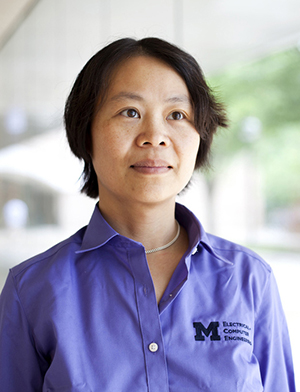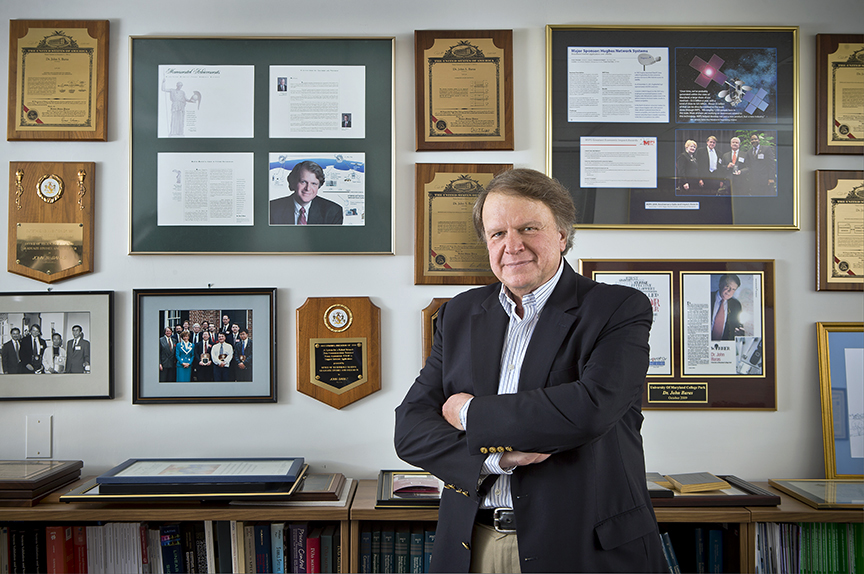News Story
Baras gives plenary lecture at DYCOPS 2010
On July 5, Professor John Baras (ECE/ISR) gave the invited plenary lecture at the 9th International Federation of Automatic Control (IFAC) International Symposium on Dynamics and Control of Process Systems (DYCOPS 2010), which brings together engineers and scientists from universities, R&D laboratories and the process industries to focus attention on new methodologies and challenging applications within process systems engineering in the context of industrial contexts and trends. DYCOPS 2010 was held at the Katholieke Universiteit Te Leuven, in Leuven, Belgium, July 5-7, 2010. The DYCOPS Symposium is held every three years, and is a continuing series of international conferences, initiated in 1986.Dr. Baras’ lecture was entitled “Architectures, Modularity and Robustness in Networked Control System,” and its theme was networked control systems which have become ubiquitous. The proliferation of information technology components and in particular networked embedded systems, has opened up new ways to connect systems, processes and agents, for better performance in many applications including manufacturing processes, chemical and biochemical processes, aerospace and automotive systems, communication, sensor and actuator networks. These distributed systems pose fundamentally new challenges as they collaborate to execute the basic “sense-decide-actuate” cycle of control systems, because the sensing, decision-making and actuation elements are not collocated and because they coordinate their activities through a network in a distributed asynchronous (at least partially) manner. Networked control systems are essentially distributed hybrid systems with multiple space-time scales and feedback loops.
In his plenary address Dr. Baras reviewed recent advances in this challenging and emerging area. He first described a novel framework for modeling and analysis of dynamic networked systems that utilizes several interacting dynamic hypergraphs. The simplest of the new class of models utilizes two hypergraphs: the collaboration one and the communication one. The collaboration hypergraph describes the time varying relation of collaboration between the systems; that is it answers the question: who has to collaborate with whom and when. The communication hypergraph describes the time varying communications that occur between the systems; that is it answers the question: who has to communicate with whom and when. He described a novel path-oriented characterization of these activities in networked control systems, as well as how multi-criteria optimization problems can be formulated and solved within this framework using a combination of algebraic and analytic tools.
Dr. Baras next presented a new fundamental way for analyzing networked control systems as networks of collaborating agents. The new fundamental view is that agents in such a network are dynamic entities that collaborate because via collaboration they can accomplish objectives and goals much better than working alone, or even accomplish objectives that they cannot achieve alone at all. Yet the benefits derived from such collaboration require some costs (or expenditures), for example due to communications. Or in equivalent terms, the collaboration is subject to constraints such as energy, communication, trust, organizational relations and structures. Understanding and quantifying this tradeoff between the benefits vs. the costs of collaboration, leads to new methods that can be used to analyze, design and control/operate networked control systems. He then proceeded to describe the dynamic constrained coalitional games mathematical framework, he has developed, which results in dynamic processes characterizing the evolution of the network over time, the so-called network formation process. He demonstrated how the metrics of benefit and cost control the dynamics, their convergence or divergence, and the structure of the resulting equilibria (i.e. generated networks), as well as how system architectures emerge from these considerations, and showed that some special network topologies are efficient from these benefits vs. costs tradeoffs.
As the final topic Dr. Baras described recent advances in model based systems engineering (MBSE), as a most promising new methodology for managing system complexity and for the development of quantitative methods and toolset frameworks for system synthesis, so as to meet requirements. He showed how components and compositional system architectures emerge from these considerations. He closed by describing how to combine these three fundamental methodologies for the analysis of: distributed optimization problems, the emergence of modules and components, networked systems robustness, compositionality and distributed algorithm performance versus network topologies.
Published July 10, 2010






